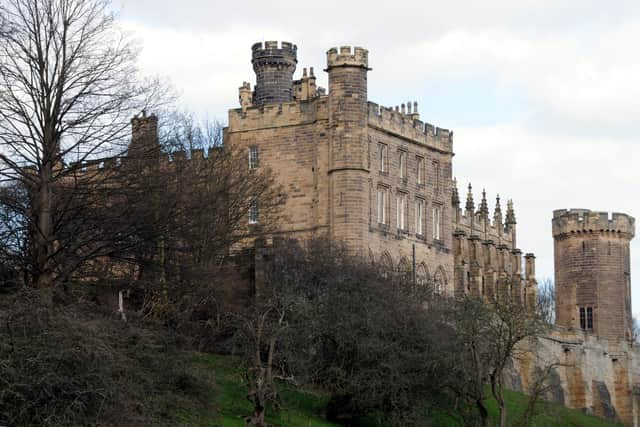A look back at the history of Lambton Estate as it throws open its gates for the first time in 40 years
and live on Freeview channel 276
Around 15km of new pathways have been opened and four new walks created as part of an ambitious scheme to develop the 1,200 acre estate and restore many of its magnificent features to their former glory.
Money from the sale of a new Miller Homes housing estate will be used to fund conservation work for Lambton Castle, the stables and Lamb Bridge.
Advertisement
Hide AdAdvertisement
Hide AdMany people will remember the estate from the days of Lambton Lion Park, but what is its history?


Durham MP Major General John Lambton first decided to build a new family home on the site of the former Harraton Hall on the north side of the River Wear, and it was his son William who hired Italian architect Joseph Bonomi to design a new house in neo-classical style in the 1820s.
The first Lambton Hall, on the south side of the river, was demolished and its name transferred to the new house – but William never saw the project completed, dying of consumption aged just 33.
The property passed to John George Lambton, later known as ‘Radical Jack’, who would become the 1st Earl of Durham, and inherited when he was just five-years-old.
Advertisement
Hide AdAdvertisement
Hide AdDuring his ownership the building was transformed with a grand Gothic style by Joseph Bonomis’ son Ignatius, as the pair set about turning Lambton Hall into a castle. Jack and Ignatius took their inspiration from Ravensworth Castle, near Gateshead, and Brancepeth, near Durham.
Ignatius added a new entrance lodge and outbuildings, new private apartments, a new exterior and an new east wing, complete with an octagonal tower based on Guy’s Tower at Warwick Castle.
The building was extended with the addition of ornate Gothic features including turrets and a new entrance was created, with seven stone arches.
Ironically, given how much of the family’s wealth was dependent on coal, much of Ignatius’ work would later have to be demolished due to mining subsidence.
Advertisement
Hide AdAdvertisement
Hide AdThe North East’s best-known architect, John Dobson carried out rebuilding work by adding a half-octagonal bay to the east gallery and a new service wing to the North, practically doubling the building’s size.
Dobson’s son-in-law, Sydney Smirke, continued his work but a combination of subsidence and the sheer cost of running such a huge property led to some of the building having to be demolished.
The grounds became well known across the North East in the early 1970s, with the opening of Lambton Lion Park.
Spread across over 200 acres, the safari park also featured elephants, giraffes, monkeys and camels.
Advertisement
Hide AdAdvertisement
Hide AdOpened in 1972, it was rebranded as Lambton Pleasure Park three years later, when additions included a Magic Castle and miniature railway.
Apart from the annual Lambton run to raise money for the Foundation of Light, the grounds have been closed to the public since the park shut its gates in 1980.
The castle’s stunning exterior underwent complete restoration in 2008/09, restoring the beauty of the stonework.
Now, with the opening up of the grounds, you can see it for yourself. The park will be open on Sundays only over the coming months.